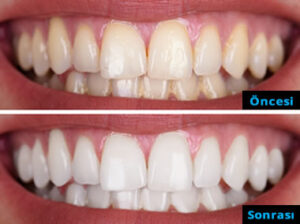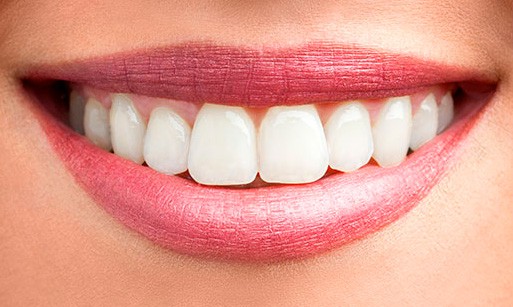How is Bleaching Performed?

It is performed in two different methods: Home type and office type.
Home bleaching is an application that is performed by the dentist by preparing a mold suitable for the teeth of the patient, placing a medicine in this mold to whiten the teeth and applying it for 6-7 hours a day. The number of uses may vary depending on the patient’s satisfaction.
Office bleaching is applied in the clinic by the dentist. Tooth surfaces are prepared for whitening, gingiva is protected. Then, whitening agents are applied to the surface of the teeth and a laser whitening device is applied to the teeth for 30-45 minutes. The rate of whitening in the teeth varies depending on the color of the teeth. It is an application that can be completed in one session depending on patient satisfaction. Again, a few sessions of bleaching can be applied upon request.
The process after bleaching is important for the permanence of white teeth. Products such as tea, cigarettes, coffee, tobacco, dye-containing foods such as chocolate, tomato paste, ketchup, and drinks such as red wine will cause the teeth whitening process to go back in a short time. The use of these products should be reduced or even avoided as much as possible. Again, oral care is important for the continuity of whiteness.
Should Bleaching Be Done?
Bleaching is a process aimed at whitening in a way that can provide more aesthetics and self-confidence by changing the color of the tooth in a healthy and safe way by using some chemicals. Considering the health and aesthetic factors together, it is an application that can significantly contribute to the person socially and psychologically by eliminating the color disorder that can affect the social life of the individual.
Chemical agents used in bleaching are mainly substances such as carbamide peroxide, hydrogen peroxide or sodium perborate, and one of these substances is generally preferred depending on the brands.
The claim that bleaching has no harm is not true. Although these harmful effects are minimized with appropriate methods, it is necessary to have information about the negative effects that may occur after bleaching, especially if appropriate methods are not used.
These effects are briefly;
- Tooth Sensitivity
- Mucosal Irritation
- Dental Pulp Damage
- Change of Enamel Surface
- Change Over Restorations.
Accordingly, Bleaching should be decided in accordance with the recommendations of your dentist and can be performed by determining the appropriate method.


